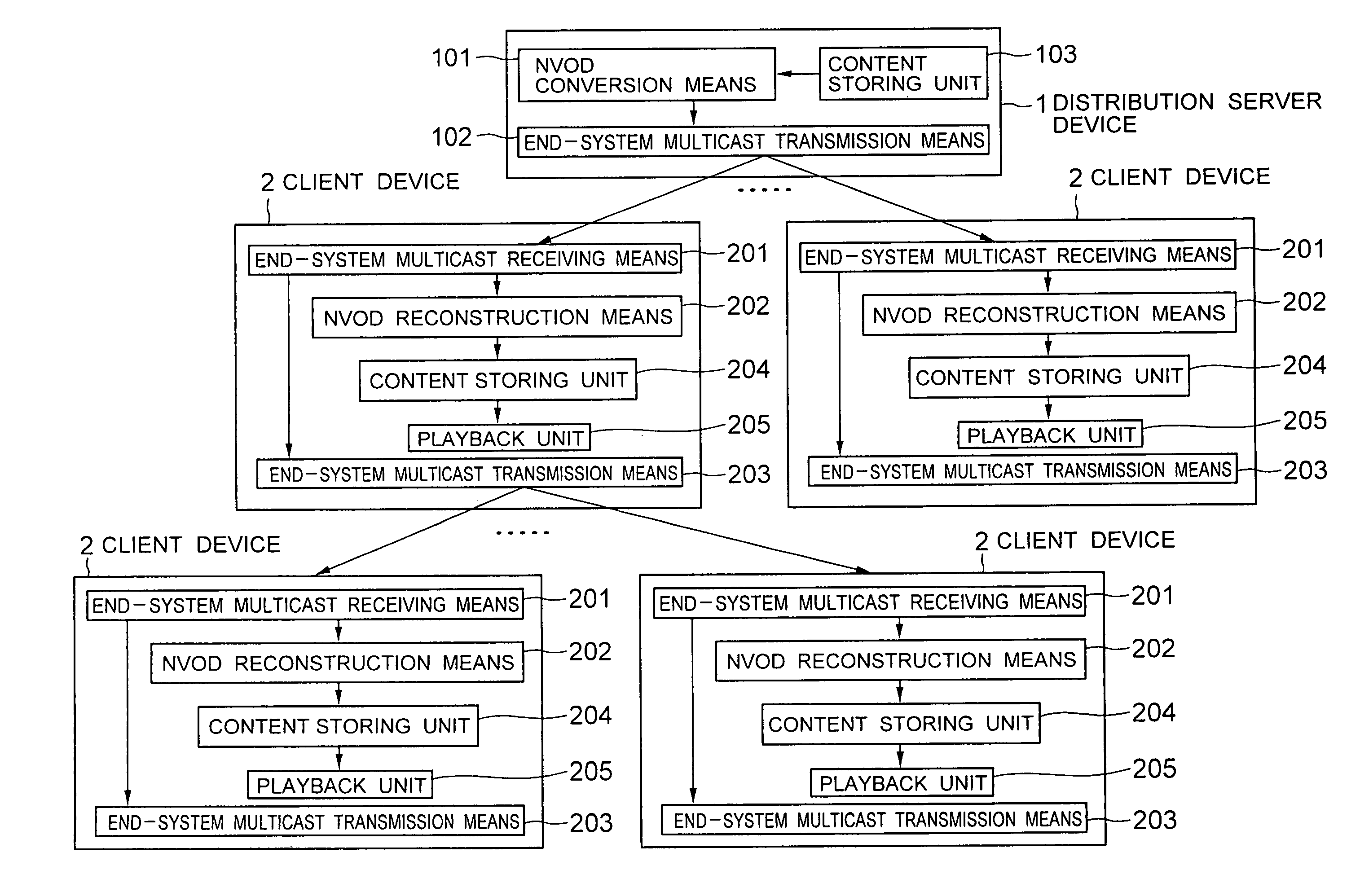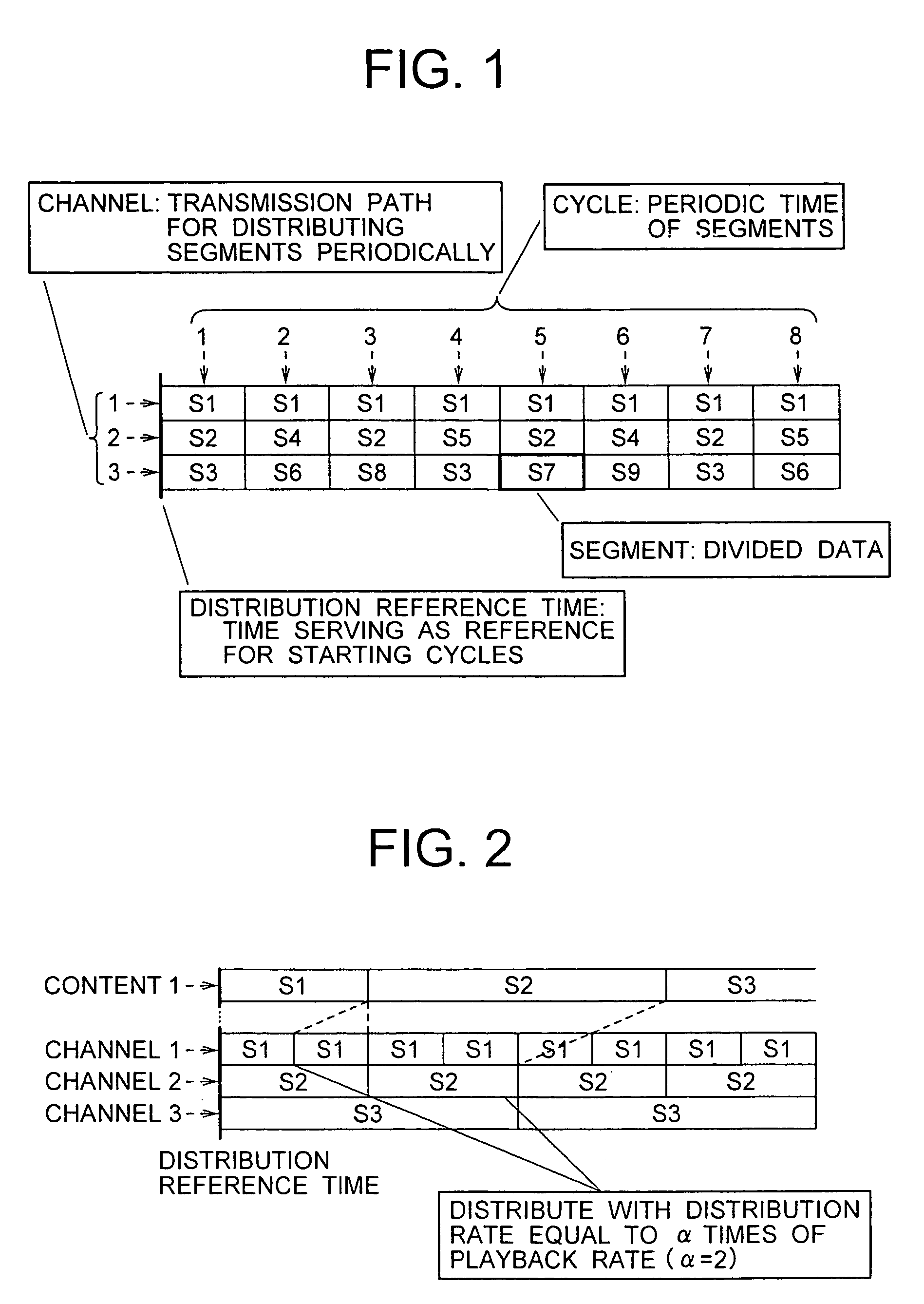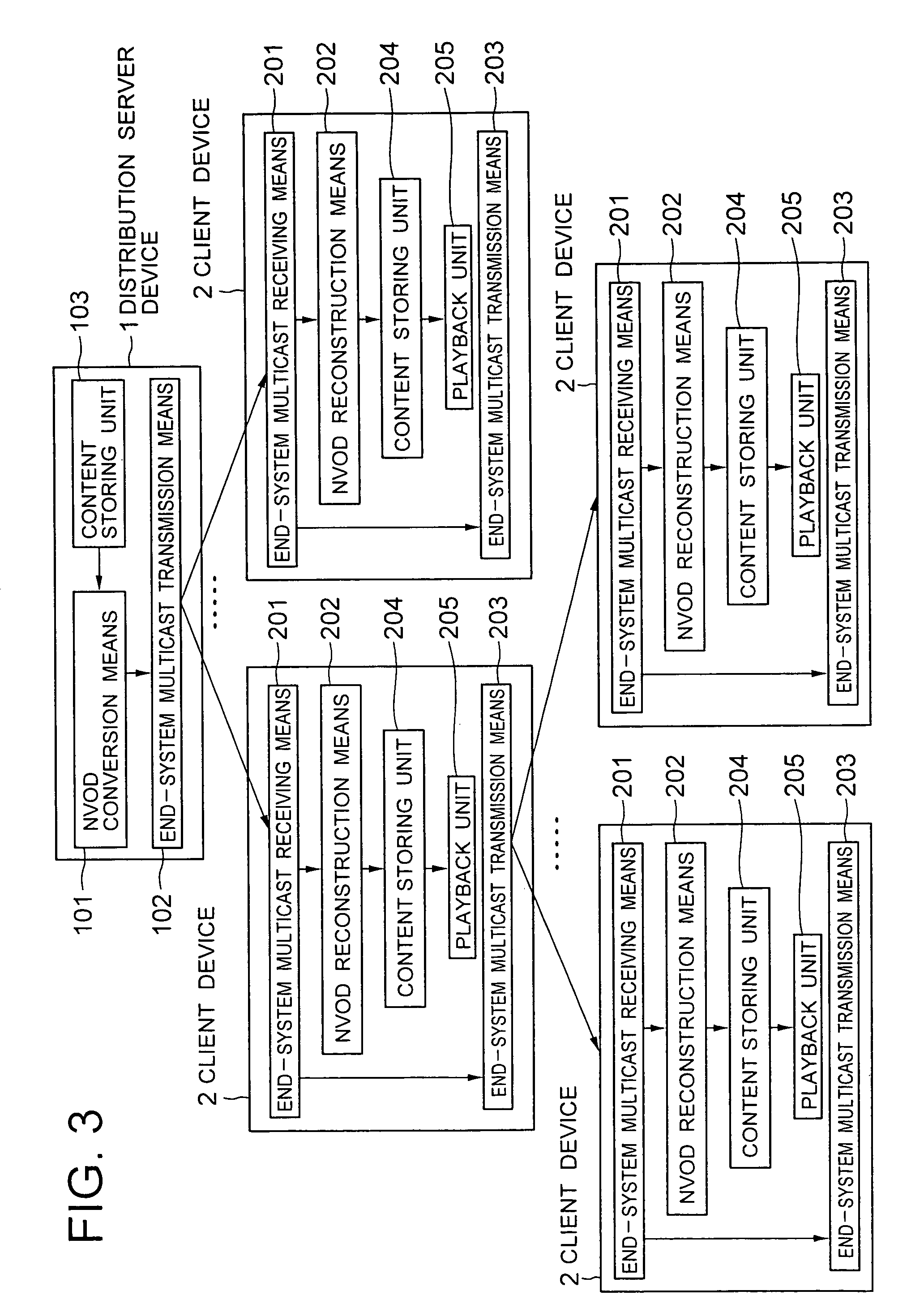Content distribution system and content distribution method
a content distribution system and content technology, applied in the field of content distribution system and content distribution method, can solve the problems of inability to cope with huge requests, limitation of the distribution bandwidth increase the workload of so as to reduce the load placed on the distribution server device, reduce the installation cost and the operational cost, and suppress the waiting period of clients
- Summary
- Abstract
- Description
- Claims
- Application Information
AI Technical Summary
Benefits of technology
Problems solved by technology
Method used
Image
Examples
embodiment 1
[0051] In FIG. 3, a content distribution system according to a first embodiment of the present invention comprises a distribution server device 1 such as a server computer and client devices 2 such as personal computers.
[0052] The distribution server device 1 includes a near-video-on-demand (NVOD) conversion means 101, an end-system multicast transmission means 102, and a content storing unit 103 which stores contents to be distributed.
[0053] The NVOD conversion means 101 reads out a content from the content storing unit 103 and converts it into stream data in accordance with an algorithm of the NVOD.
[0054] The end-system multicast transmission means 102 establishes at least one end-system multicast tree among plural client devices which request to play back the content, and transmits stream data converted by the NVOD conversion means 101.
[0055] The client device 2 includes an end-system multicast receiving means 201, a near-video-on-demand (NVOD) reconstruction means 202, an en...
embodiment 2
[0071]FIG. 5 is a diagram showing the structure of a content distribution system according to a second embodiment of the present invention. Referring to FIG. 5, the content distribution system according to the second embodiment of the present invention comprises a distribution server device 3 such as a server computer and client devices 4 such as personal computers.
[0072] The distribution server device 3 according to the second embodiment of the present invention includes, in addition to the structure of the distribution server device 1 shown in FIG. 3, a time-division multiplexing means 104. The client device 4 includes, in addition to the structure of the client device 2 shown in FIG. 3, a time-division demultiplexing means 206.
[0073] The time-division multiplexing means 104 of the distribution server 3 time-division multiplexes plural channels from the NVOD conversion means 101, and supplies the information of the channel which are time-division multiplexed to the end-system mu...
embodiment 3
[0085]FIG. 7 is a diagram showing the structure of a content distribution system according to a third embodiment of the present invention. Referring to FIG. 7, the content distribution system according to the third embodiment of the present invention comprises a distribution server device 5 such as a server computer, and client devices 6 such as personal computers.
[0086] The distribution server device 5 according to the third embodiment of the present invention includes, in addition to the structure of the distribution server device shown in FIG. 3, an end-system multicast tree selecting means 105. The client terminal 6 includes, in addition to the structure of the client terminal 2 shown in FIG. 3, an end-system multicast tree selecting means 207.
[0087] The end-system multicast tree selecting means 105 selects which end-system multicast tree is used to transmit the stream data output from the NVOD conversion means 101. Then, the end-system multicast tree selecting means 105 outpu...
PUM
 Login to View More
Login to View More Abstract
Description
Claims
Application Information
 Login to View More
Login to View More - R&D
- Intellectual Property
- Life Sciences
- Materials
- Tech Scout
- Unparalleled Data Quality
- Higher Quality Content
- 60% Fewer Hallucinations
Browse by: Latest US Patents, China's latest patents, Technical Efficacy Thesaurus, Application Domain, Technology Topic, Popular Technical Reports.
© 2025 PatSnap. All rights reserved.Legal|Privacy policy|Modern Slavery Act Transparency Statement|Sitemap|About US| Contact US: help@patsnap.com



